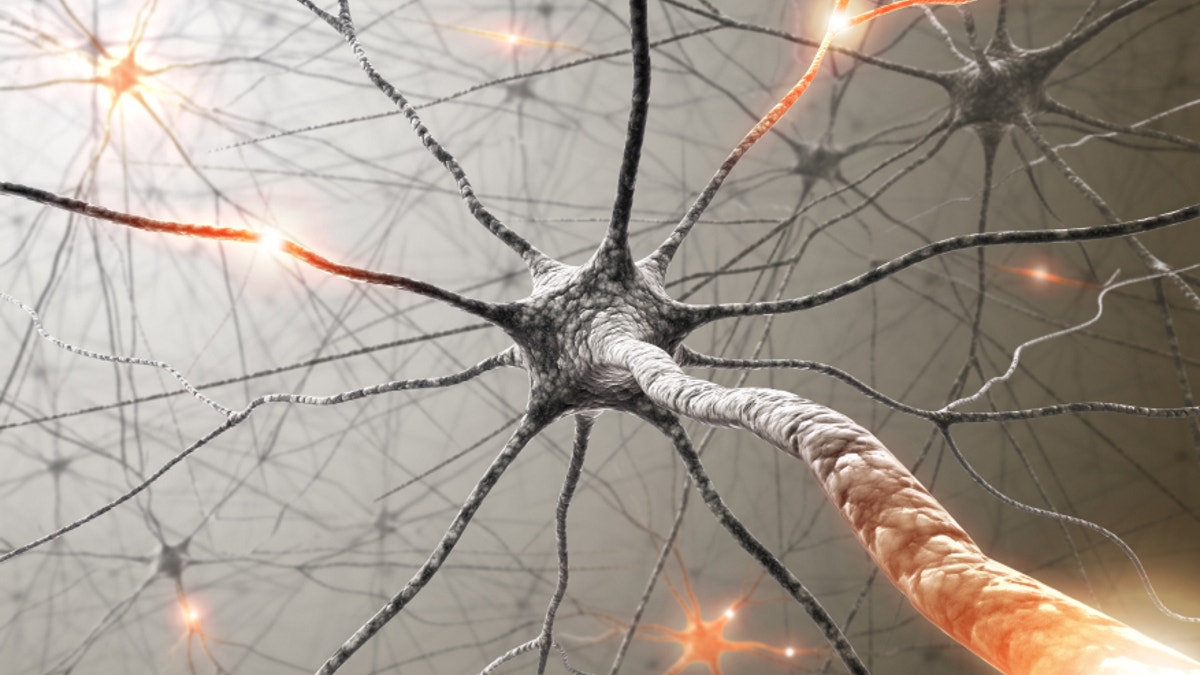
New research has found that plaques are not the main cause of Alzheimer’s disease, but rather the protein tau, also known as “tangles.”
“For a very long time, we believed, for almost 100 years, that [amyloid-beta] plaques are the main culprit in Alzheimer’s disease,” the study's senior investigator, Charbel E-H Moussa, MB, assistant professor of neuroscience at Georgetown University Medical Center, told FoxNews.com. “This study shows it’s another protein -- a very, very important one, called tau, is basically the main guilty one.”
Researchers found that tau modulates how much amyloid protein stays inside a cell, and how much is secreted outside the cell to form plaque. This build-up is what leads to neuron death. The plaque that forms outside a cell are not toxic, as previously believed, they found.
If tau is functioning normally, the amyloid-beta (Abeta) protein in a cell is “digested,” and what is not degraded is expelled outside the cell and accumulated as plaque. This pool of amyloid builds up in the cell, causing it to die.
Moussa likened tau to a train track— if it’s functioning normally, the train can run. If it’s disrupted, the train can’t move debris from one end of the cell to the other. There needs to be a ratio of “good” to “bad” tau -- the “good” holds the tracks together, but the “bad” makes it fall apart.
“…We know that the ratio of amyloid inside the cell to the outside is very small,” Moussa said. “So what gets out is basically an attempt by the cell to expel toxic amyloid.”
For their study, researchers worked with animal models. The mice who did not have tau were unable to digest Abeta, and had about twice as much plaque as those who had tau. However, looking at the toxicity, the mice with less plaque but more intercellular build-up were more toxic.
According to researchers, their findings have major implications for designing therapies for Alzheimer’s disease, a type of dementia which affects more than 5 million Americans and is the sixth leading cause of death in the U.S. The disease causes problems with memory, thinking and behavior.
Current treatments for Alzheimer’s are immunotherapy-based and have the goal of binding to the plaque outside a cell and killing it.
“You give them a year, do a scan, and see the plaque has dissolved, but still have the scientific problem, [the patient] still declined the same way as a placebo patient,” Moussa said.
Their findings indicate that using drugs to restore normal function of tau will allow intracellular Abeta to be cleared out, thus avoiding cell death.
“It’s much more likely that people will develop degenerative cell death and dementia if they have tau modifications than if they have Abeta plaques,” he said.
The researchers studied nilotinib, an anti-cancer drug that is approved for use in adult-onset leukeumia patients, as a solution to clear intracellular debris and reduce the “bad” level of tau. The drug works by entering the cell to clear debris, but also reduces plaques outside the cell to prevent progression of the disease. This reduction of plaque is necessary because researchers believe that when plaque is secreted, some of it is internalized inside the cell, and clearing outside plaque reduces inflammation in the brain.
Clinical trials of nilotinib will begin in a matter of weeks, Moussa said. The study will use a dose that’s at least ten times lower than the amount used for leukemia treatment. Patients in the trial have Lewy Body dementia, a disease that shares characteristics of both Parkinson’s and Alzheimer’s— instead of having plaque in the brain, patients have tau modifications, as well as the protein alpha-synuclein, a pathological hallmark of Parkinson’s.
The study helps explain why past research has found that some older patients who have a lot of plaque accumulation do not have dementia. Additionally, in earlier onset dementias that are not Alzheimer’s, normally there are no plaques in the brain, but patients still have very similar symptoms. Researchers predict any drug that reduces bad tau in the brain will stabilize a patient’s Alzheimer’s symptoms.
Currently, there are no screenings for Alzheimer’s. While there are genetic variants that can increase risk, it doesn’t necessarily mean the disease will develop. However, there is a technique that scans for tau that Moussa believes doctors should be using instead of scanning for plaques.
Tau screening will likely detect signs of Alzheimer’s much earlier and be more rigorous in predicting if a patient will develop dementia, Moussa noted.
“Recent evidence suggests is appears that tau modification happens much earlier than amyloid plaques … and because almost every patient who has tau modification has dementia, it’s going to be a much more reliable and precise predictor of Alzheimer’s and other dementias than Abeta,” Moussa said.
With earlier screenings and a drug that clears bad tau in the brain, patients could prevent further tau modification and build up in the plaques to avoid Alzheimer’s or dementia, Moussa said.
“If I’m 40 years old, and you do tau screening and find some, then screen five years from now and see more tau modifications, compared to the general population, if a drug can reduce the level of that bad tau, that would present or at least delay the onset of dementia,” he said. “That’s absolutely like preventative care.”
“The dogma has been for a very long time, if you have Alzheimer’s disease, you have to have plaques or tangles [twisted fibers of tau]… what we’re finding here is you probably have to have tangles and tau losing function, but don’t necessarily have to have plaque to have Alzheimer’s disease, because it’s only a product, not the cause.”
